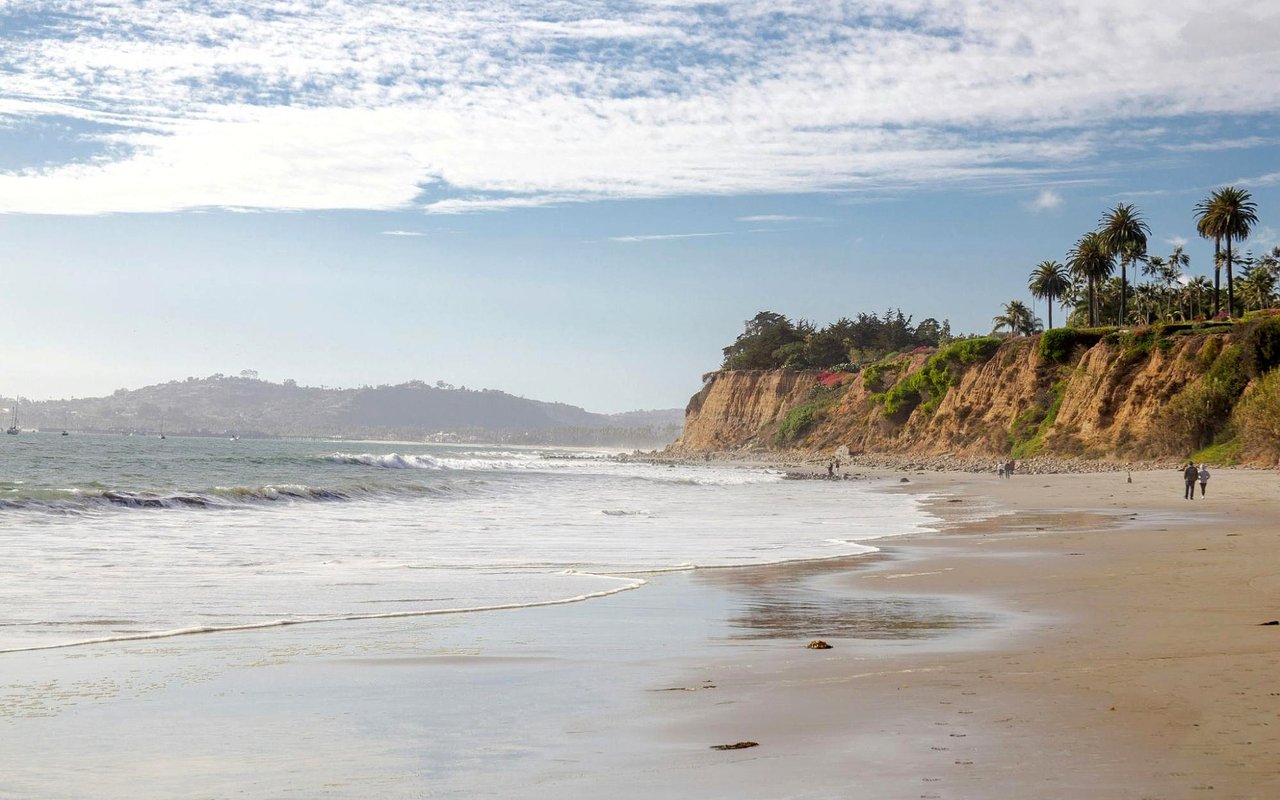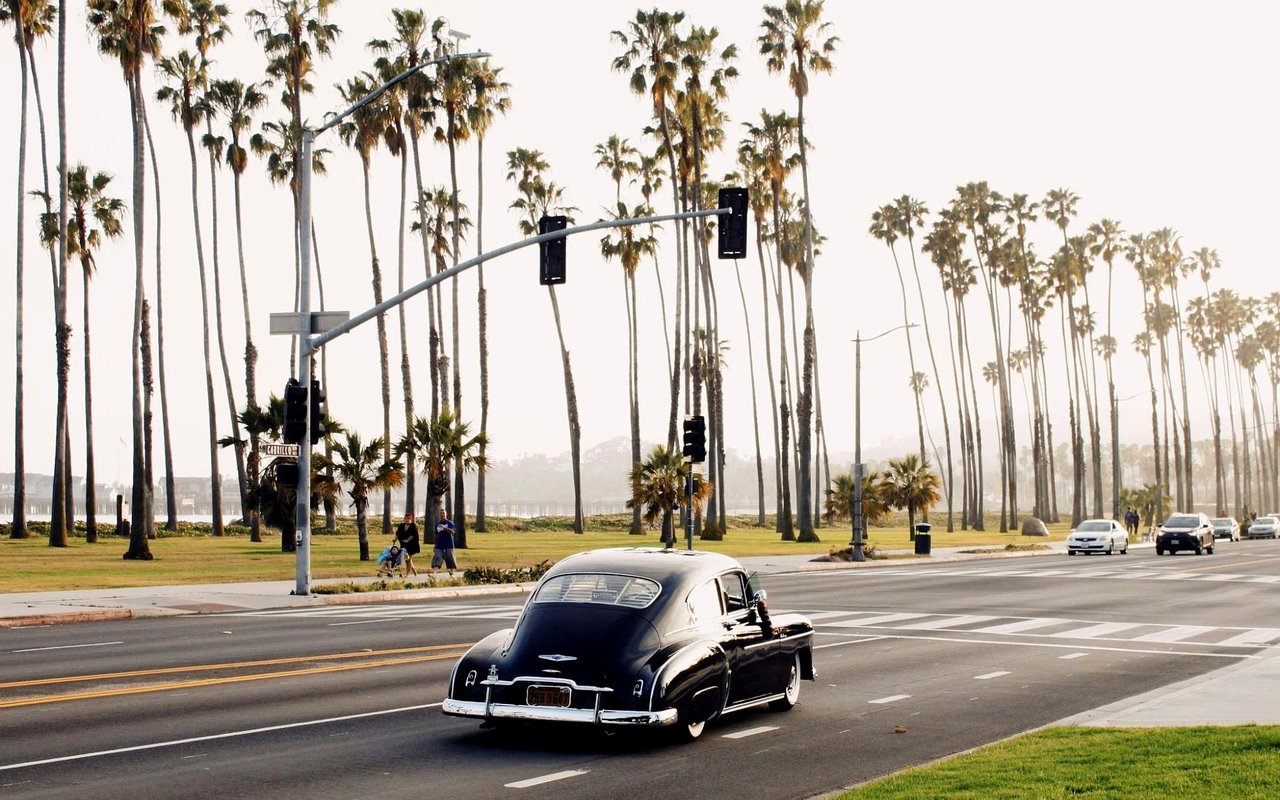Montecito, located along California's scenic coast, has an aesthetic that embodies the town’s history. Visitors to Montecito have the opportunity to explore its fascinating heritage at grand estates, historic mansions, and other elaborate buildings. This guide delves into several prominent architectural sites in Montecito, emphasizing their historical importance and distinctive appeal.
1. Casa del Herrero
Casa del Herrero, Spanish for "House of the Blacksmith," is a prominent example of Montecito architecture from the 1920s. Designed by noted architect George Washington Smith, this estate showcases the Spanish Colonial Revival style with its red-tile roofs, whitewashed walls, and intricate wrought ironwork. The house and its meticulously preserved gardens offer visitors a glimpse into the elegance and craftsmanship of the era.
Visitors can tour the house's interior, adorned with original furnishings and artworks, and explore the expansive gardens landscaped in the Mediterranean style. Casa del Herrero is a testament to the vision of its creators and remains a cherished landmark in Montecito.
Visitors can tour the house's interior, adorned with original furnishings and artworks, and explore the expansive gardens landscaped in the Mediterranean style. Casa del Herrero is a testament to the vision of its creators and remains a cherished landmark in Montecito.
2. Lotusland
Lotusland is renowned for its botanical gardens and distinctive architecture that blends artistry with nature. Originally the estate of Polish opera singer Madame Ganna Walska, Lotusland features diverse garden themes and rare plant species. The grounds include whimsical sculptures, intimate garden rooms, and structures influenced by Asian and European design elements.
The Japanese Garden, complete with a tea house and koi pond, reflects a serene harmony of architecture and nature. Lotusland's intricate design illustrates Madame Walska's eclectic tastes and dedication to creating a unique sanctuary of beauty and inspiration.
The Japanese Garden, complete with a tea house and koi pond, reflects a serene harmony of architecture and nature. Lotusland's intricate design illustrates Madame Walska's eclectic tastes and dedication to creating a unique sanctuary of beauty and inspiration.
3. Montecito Inn
The Montecito Inn, established in 1928 by actor Charlie Chaplin and his friend, offers a glimpse into Montecito's early 20th-century architecture and Hollywood glamour. Designed by architect Arthur E. Harvey, the inn features the Spanish Colonial Revival style with stucco walls, tiled roofs, and arched doorways. The interior boasts vintage furnishings and décor that evoke a sense of timeless elegance.
Guests can experience the inn's historic charm while enjoying modern amenities and hospitality. The Montecito Inn remains a cherished architectural landmark that captures the essence of Montecito's allure.
Guests can experience the inn's historic charm while enjoying modern amenities and hospitality. The Montecito Inn remains a cherished architectural landmark that captures the essence of Montecito's allure.
4. El Fureidis
El Fureidis, a Mediterranean Revival mansion designed by Bertram Goodhue, is a private property that incorporates Moorish, Persian, and Spanish influences. Commissioned in the early 20th century by industrialist James Waldron Gillespie, the estate features lush gardens, opulent interiors, and panoramic views of the Santa Barbara coastline.
El Fureidis has hosted notable figures such as Albert Einstein and Winston Churchill, adding to its allure as a culturally significant place. The historic mansion is a window into Monticeto’s golden age of elegance and sophistication.
El Fureidis has hosted notable figures such as Albert Einstein and Winston Churchill, adding to its allure as a culturally significant place. The historic mansion is a window into Monticeto’s golden age of elegance and sophistication.
5. Coral Casino Beach and Cabana Club
The Coral Casino Beach and Cabana Club, designed by architect Gardner A. Dailey, embodies mid-20th-century architecture and seaside luxury. Established in 1937, the club features a Streamline Moderne style with curved forms, glass walls, and ocean-facing terraces. The interior includes original artwork, tropical motifs, and a historic Olympic-size swimming pool.
Members and hotel guests only can enjoy the club's amenities, including dining, lounging by the pool, and access to the private beach. The Coral Casino Beach and Cabana Club remains an iconic architectural landmark that captures the essence of Montecito's coastal lifestyle.
Members and hotel guests only can enjoy the club's amenities, including dining, lounging by the pool, and access to the private beach. The Coral Casino Beach and Cabana Club remains an iconic architectural landmark that captures the essence of Montecito's coastal lifestyle.
6. The George C. Stewart House
The George C. Stewart House, designed by Frank Lloyd Wright, is a prized architectural landmark in Montecito. Built in 1910 as a vacation home for a Scottish accountant and his family, this house is a prime example of Frank Lloyd Wright's Prairie-style architecture. Located near the intersection of Hot Springs and Summit roads, the home initially included plans for a main house, gardener’s cottage, stables, and a work shed, though only the main house and cottage were built.
Wright's design for the Stewart House emphasized a low, horizontal silhouette to integrate seamlessly with the landscape. The home features over 360 windows, promoting a strong connection between indoor and outdoor spaces. The use of redwood siding further blended the house into its wooded surroundings. A unique feature was a notch in the eaves to accommodate a large eucalyptus tree, highlighting Wright's commitment to harmony with nature. Today, author T.C. Boyle lives in the house.
Wright's design for the Stewart House emphasized a low, horizontal silhouette to integrate seamlessly with the landscape. The home features over 360 windows, promoting a strong connection between indoor and outdoor spaces. The use of redwood siding further blended the house into its wooded surroundings. A unique feature was a notch in the eaves to accommodate a large eucalyptus tree, highlighting Wright's commitment to harmony with nature. Today, author T.C. Boyle lives in the house.
Appreciating Montecito's Architectural Heritage
The Montecito buildings described above encompass a variety of styles, including Spanish Colonial Revival, Mediterranean Revival, Beaux-Arts, and modernist designs. Each one provides insights into the area's history, culture, and the visions of its creators. Whether exploring historic estates like Casa del Herrero or enjoying modern amenities at the Montecito Inn, visitors can appreciate Montecito's architectural legacy and its enduring appeal. These places of interest offer a firsthand experience of Montecito's beauty, elegance, and cultural significance through its architecture.
Looking for expert guidance in real estate in Montecito? Consider Alemann & Associates for your next move. Whether you're looking to buy, sell, or invest in property in this prestigious area, their experienced team offers personalized service and deep knowledge of the local market. Contact Alemann & Associates today to begin your journey toward finding the perfect property or maximizing your investment in Montecito.
Looking for expert guidance in real estate in Montecito? Consider Alemann & Associates for your next move. Whether you're looking to buy, sell, or invest in property in this prestigious area, their experienced team offers personalized service and deep knowledge of the local market. Contact Alemann & Associates today to begin your journey toward finding the perfect property or maximizing your investment in Montecito.




